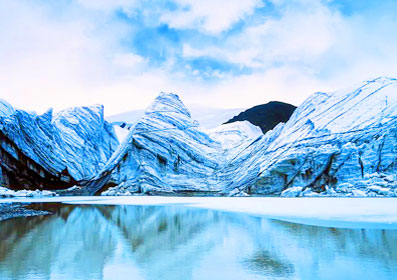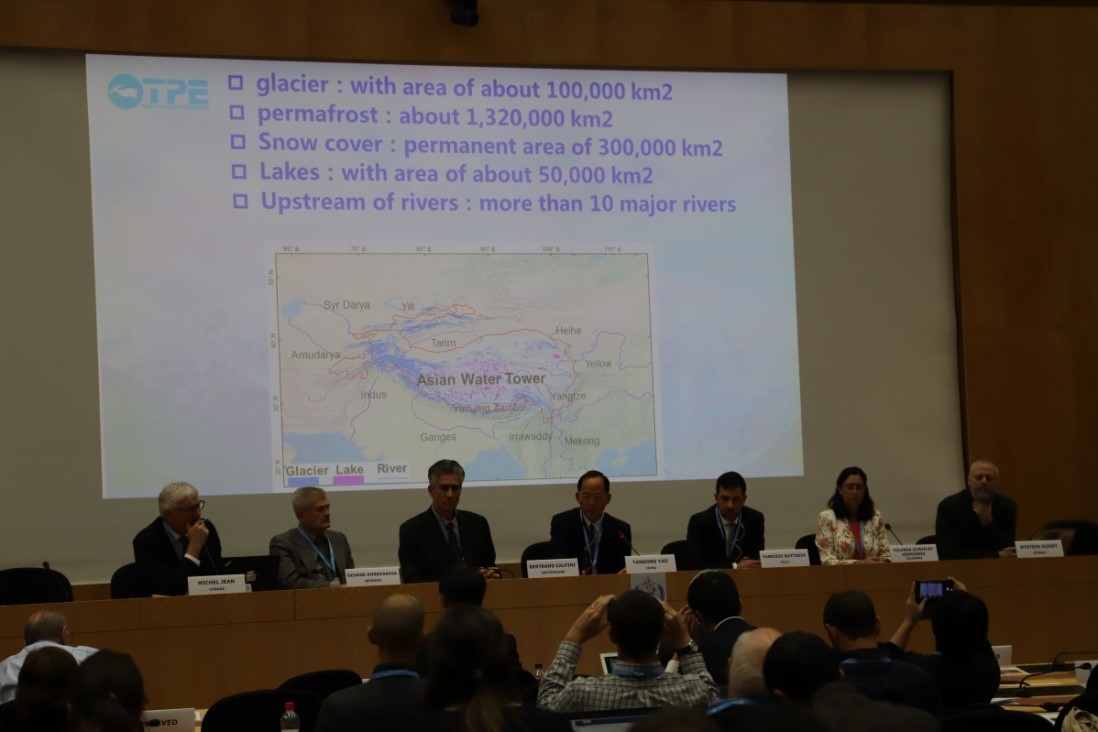新闻动态
NEWS

TPE and GCW Highlighted Observation-prediction Integration on WMO High Mountain Summit
The World Meteorological Organization convened a High Mountain Summit (HMS) on 29–31 October, 2019 in Geneva, Switzerland, with Third Pole Environment (TPE) being one of its six partners. The Summit brought together more than 150 stakeholders from all over the globe to identify priority actions to support more sustainable development, disaster risk reduction and climate change adaptation both in high-mountain areas and downstream. TPE held a side event with WMO Global Cryosphere Watch (WMO-GCW) on the Summit and a MoU was signed between WMO and TPE.

WMO SG Petteri Taalas and TPE Co-Chair YAO Tandong signing MoU
Prof. YAO Tandong, Co-Chair of the Third Pole Environment was invited to give a keynote speech on the Summit to introduce progress and frontiers of the TPE program.

TPE Co-Chair Delivering Keynote speech on the High Mountain Summit
TPE and WMO-GCW jointly held a side event titled “Roadmap to integrated mountain cryosphere observation and information system”. Chaired by Prof. YAO Tandong, TPE co-chair and Dr. árni Snorrason, Permanent Representative of Iceland with WMO and chair of GCW, the side event attracted 60 international experts. Dr Wenjian ZHANG, the Assistant Secretary General of WMO welcomed this side event as an important milestone of the increased collaboration between TPE and WMO/GCW. The side event included two panels, followed by general discussions. The first panel discussion addressed the topic of Cryosphere Observations and their links to monitoring/predictions, while the second focused on the Integrated cryosphere information system.
During the first panel discussion, Prof. CHEN Deliang, member of the TPE executive committee and August Rohss Chair of University of Gothenburg (Sweden) highlighted the importance of high mountain observations to integrated mountain prediction; Prof. Lonnie Thompson, TPE co-chair and distinguished professor of Ohio State University (US), warned of the demise of low-latitude glaciers; Dr. Owen King from University of St. Andrews (UK) reported latest findings of a Pan-TPE project on glacier mass loss in the Third Pole; Prof. ZHANG Fan from Institute of Tibetan Plateau Research, Chinese Academy of Sciences(ITPCAS), shared insights into hydrology and water chemistry observation and data in the Third Pole; Prof. Deepak Aryal from Tribhuvan University (Nepal) introduced application of automatic weather stations at high elevations; Prof. Vladimir Aizen from University of Idaho (US) reviewed observation work on glaciers in central Asia. Dr. C.Fierz from GCW updated the participants of GCW observation program.

The TPE-GCW Side event on the Summit
In the second panel discussion, Prof. LI Xin from ITPCAS introduced the TPE/ITP big data system; Dr. Oystein Godoy from GCW introduced GCW Data Portal and FAIR (Findable, Accessible, Interoperable And Re-usable) principles; and Dr. Mathias Bavay from GCW shared practices of GCW Data Interoperability and Standardization.
After general discussions, the side event reached the consensus that collaborative efforts should be made to integrate mountain cryosphere observation and information system to ensure better access to cryospheric data and information at regional to global scale. This is one of the goals towards which TPE has already made headway. For instance, in January 2019, TPE organized International Workshop on Cryosphere and Water Cycle Observation-Modelling Integration over the Third Pole and identified key areas, research questions, variables and processes for enhanced observations and model analyses by working/action groups. An action plan was developed, highlighting convection, water vapor transport, glacier fluctuations, precipitation, water/hydrology and super site.
Built on this workshop, TPE held the international workshop on the Asian Water Tower in July 2019, where 50 international experts came together to develop strategies in the face of Asian Water Tower changes. The workshop gives priorities to observation, modeling and impact studies as it draws up research plans for international cooperation. These efforts are reflected in the Call for Action from the HMS, which highlighted that “there is a great urgency to take global action now to build capacity, invest in infrastructure and make mountain and downstream communities safer and more sustainable. This action must be informed by science, local knowledge and based on transdisciplinary approaches to integrated observations and predictions”. Following the Call for Action, TPE program will continue its close cooperation with WMO and other partners in mountain cryosphere, hydrology and climate studies.
(This news is from TPE: http://www.tpe.ac.cn/highlights/201911/t20191125_226205.html)



 京公网安备11010502040845号
京公网安备11010502040845号